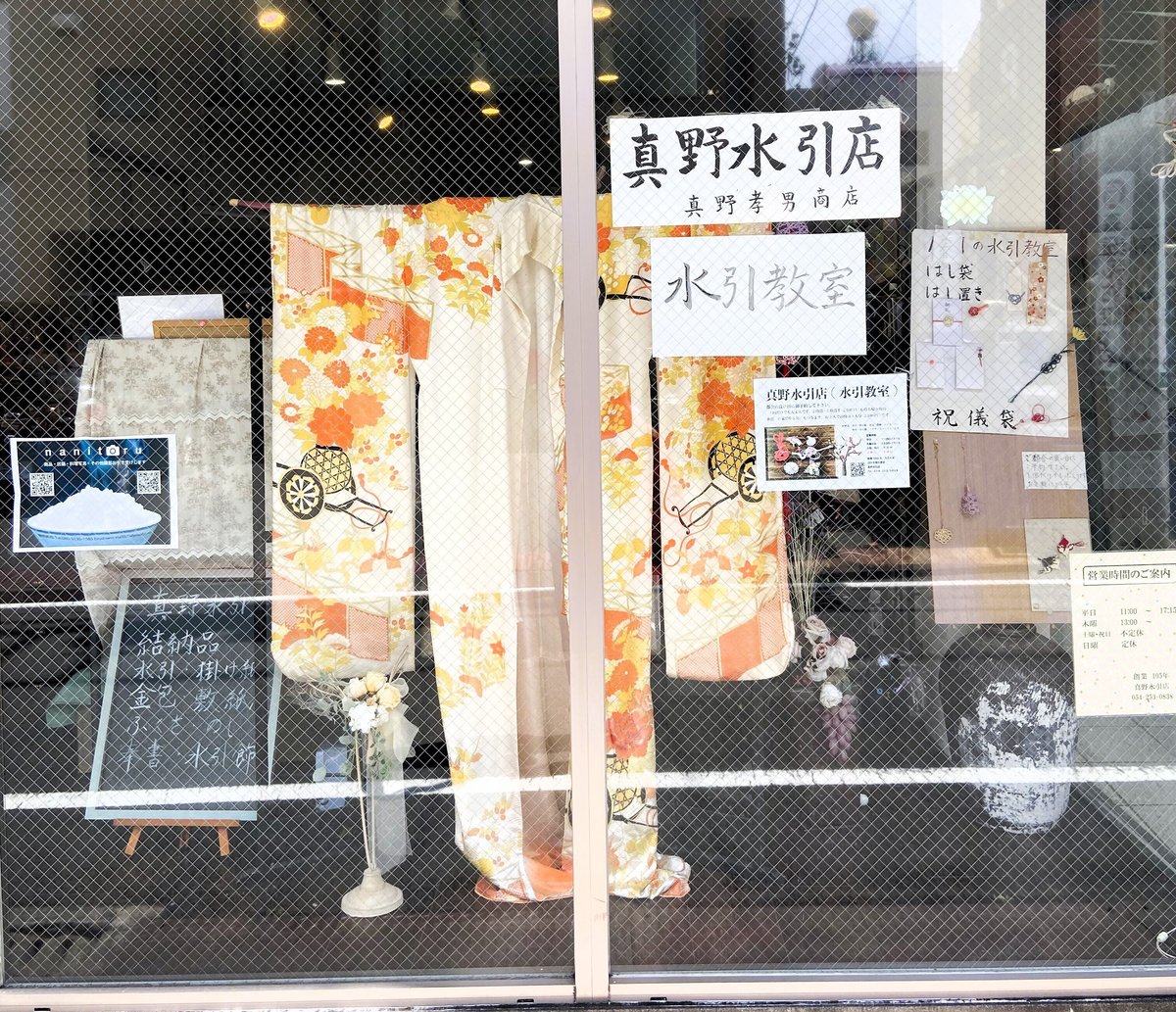
【~連載~静岡の歴史を学ぼう241】Mizuhiki lesson Part2 水引レッスン パート2 Mano-shoten 真野商店
※ この記事は「静岡移住計画 Facebook」に掲載しております。
水引のお店は日本全国にあります。しかしアットホームな雰囲気の中、ゆったりと水引を作るのを楽しむ。まさに美味しい水を味わえる静岡でリラックスして暮らすのと似た雰囲気を真野商店で感じます。わざわざ関東地方から通ってきている生徒さんもいらっしゃるそうですよ。また生徒さんのお一人が「あわじ結び・梅結び」の方法についてYoutubeを作ってくださいました。QRコードを添付します。こちらも要チェックです。

Mizuhiki lesson Part2
水引レッスン パート2
Simply put, mizuhiki items are combinations of knot-tying.
簡単に言うと、水引の品々は結び目の組み合わせです。

As for mizuhiki, knotting can be elevated into an art form.
水引では結ぶことが芸術にまで昇華されています。
The basic knotting is called ‘Awaji-musubi’, which represents abalone.
基本的な結び方は「あわじ結び」です。アワビを表しています。

This type of knot is the foundation of all mizuhiki crafts.
この結び方がすべての水引作品の基本です。
The mizuhiki strings seem stiff yet still flexible enough to stabilize the form.
水引の糸は固いように見えますが、柔軟でもあり、しっかりと形作ることが出来ます。
First, I have to hold and rub along the mizuhiki strands to soften them before curling and tying them.
まず、水引の糸をしっかり挟んでこすります。曲げて結ぶ前に柔らかくしておくためです。

We must avoid touching the edge as it should remain hard to keep the form.
端を触ってはいけません。形を保つために固いままにしておきたいのです。
First, let's practice with a singular strand. And then, let's try with two. Then, let's do it with three strands.
まずは、一本で練習してみましょう。その次は二本でやってみましょう。そして今度は三本の糸でやってみます。

Based on the Awaji–musubi (abalone), we can rearrange the edges a little bit more, so we can form a new shape, "ume-musubi", which represents a plum blossom.
あわじ結び(アワビ)を元にして、その端をすこし整えると、新しい形「梅結び」ができます。梅の花を表しています。

Ume-musubi is a popular knotting style to make mizuhiki art works because plum blossoms are considered as auspicious plants in Japan.
梅結びは水引の作品を作るのに人気のある結び目の型です。梅の花は日本で縁起の良い植物と考えられているからです。

Speaking of auspicious plants in Japan, three plants are popular: pine trees, bamboos, and plum blossoms.
日本で縁起が良い植物と言えば、三つの植物、松・竹・梅です。
So, according to my teacher, Ms. Mano, there are also Matsu-musubi (knot-tying of pine leaves) and Take-musubi (knot-tying of bamboo).
ですから、真野先生によると、松結び(松葉の形の結び目)、竹結び(竹の結び目)もあります。

※ このペンダントトップは販売されておりません。
先生曰く「一緒に作りましょう」とのことです。ぜひレッスンのご予約を!

In my lesson, only ume-musubi was used so that I could first master making mizuhiki crafts.
私のレッスンでは、まず水引の作品を作ることを習得できるよう、梅結びだけ使いました。

ポチ袋に使ったのはあわじ結びです。
※ 水引アクセサリーですが、欲しい方は「一緒にお教室で作りましょう!」とのことです。そう言われるとまた参加したくなります!
(真野商店:静岡市葵区人宿町一丁目4-3 レ・サンクビル1F
℡:054-253-0838)

もちろん祝儀袋の種類も豊富。伝統の水引の品々も取り揃えてあります。

